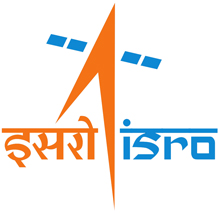ISRO Tests Semi-Cryogenic Engine
The Indian Space Research Organisation (ISRO) has recently embarked on a series of tests to develop and evaluate semi-cryogenic engines for future launch vehicles. The first integrated test marks a significant milestone in India’s space exploration endeavors.
Testing Location and Purpose
The inaugural integrated test of the semi-cryogenic engine took place at the ISRO Propulsion Complex (IPRC) in Mahendragiri, Tamil Nadu. This state-of-the-art facility serves as the ideal testing ground for assessing the performance and capabilities of these advanced engines. The primary objective of these tests is to develop and validate semi-cryogenic engines that will power future launch vehicles, furthering India’s space exploration ambitions.
The newly commissioned testing facility at IPRC boasts a remarkable thrust capability of up to 2600 kN. This cutting-edge infrastructure will not only support ongoing semi-cryogenic engine testing but also facilitate the testing and qualification of fully integrated engines and stages.
Propellant Combination and Intermediate Configuration
The semi-cryogenic engine being tested utilizes a propellant combination of Liquid Oxygen (LOX) and Kerosene. This combination offers an efficient and powerful fuel source for the engine, ensuring optimal performance during launch missions. In the testing process, an intermediate configuration called the Power Head Test Article (PHTA) is employed. This configuration includes all engine systems except the thrust chamber, providing a comprehensive evaluation of the propellant feed system and control components.
Role of Liquid Propulsion Systems Centre (LPSC)
The responsibility for the design and development of the semi-cryogenic engine lies with the Liquid Propulsion Systems Centre (LPSC), an integral part of ISRO. The LPSC, in collaboration with Indian industry participation, is spearheading the efforts to create a 2000 kN thrust semi-cryogenic engine. This engine will serve as the power source for the booster stages of future Indian launch vehicles, bolstering the country’s space transportation capabilities.
Milestone Achieved and Chill-Down Operations
The recent test conducted at IPRC represents a significant milestone in the development of semi-cryogenic engines. By successfully validating the propellant feed system and control components, the test has paved the way for further integration and qualification of the complete engine. During the test, extensive chill-down operations were carried out, lasting approximately 15 hours. These operations involved preparing the LOX circuit for engine start, ensuring optimal performance and safety during the launch phase.
Month: Current Affairs - May, 2023
Category: Science & Technology Current Affairs


